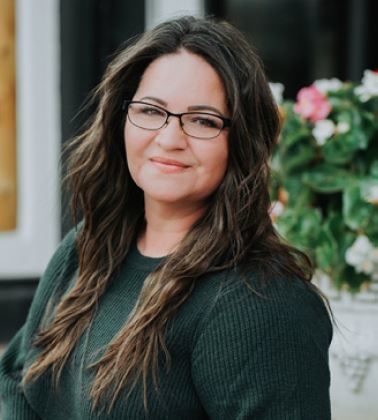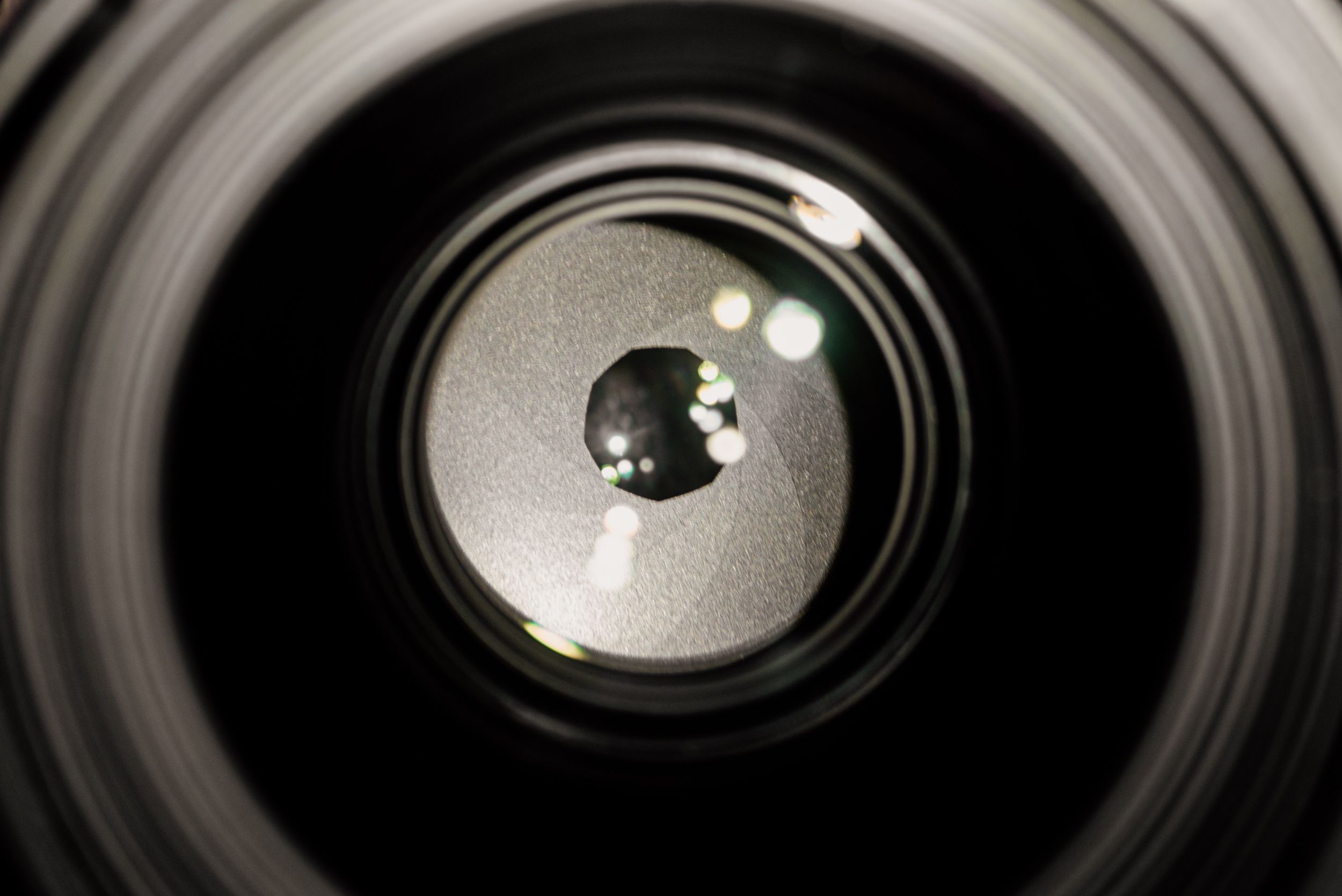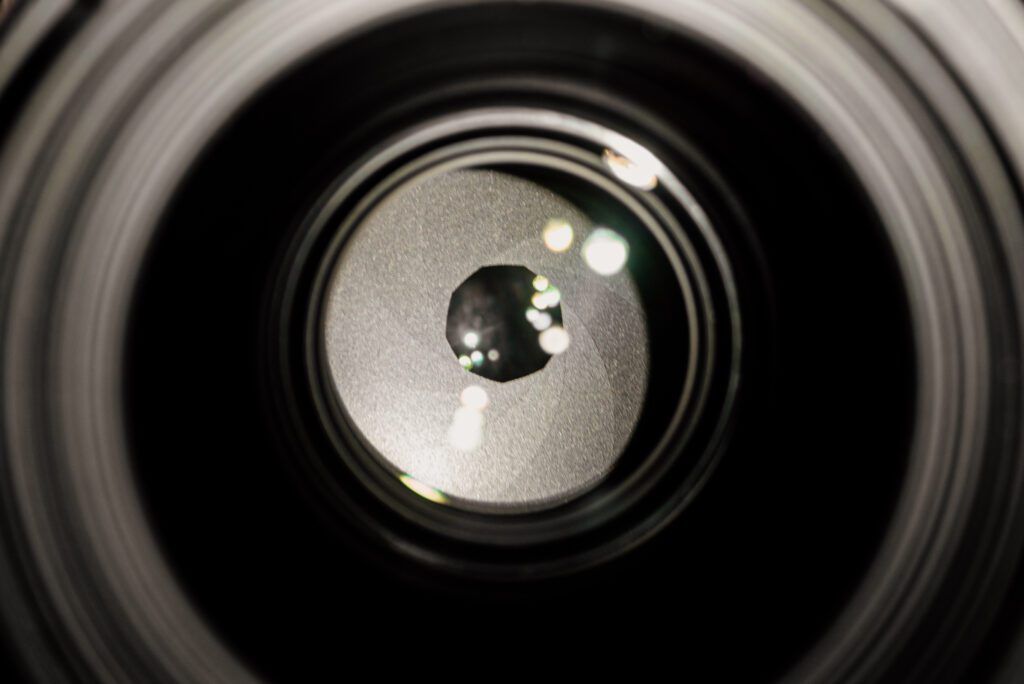Aperture, like shutter speed, is an essential building block in understanding how light reaches our camera’s sensor for us to create the perfect photograph.
Learning about aperture can be confusing at first and can trip up the most experienced photographers, but it does get easier to understand with patience and practice.
Let’s get started.
In this guide, we will discuss the following:
- What aperture means
- What a diaphragm is and how it works
- How aperture affects our photos
- How aperture is measured in our cameras
- How aperture size affects our depth of field and how to control it
Recommended Reading: If you’d like to master camera settings to create gorgeous, creamy, blurry backgrounds, grab a copy of Photzy’s premium guide: Beautiful Background Blur.
What Does Aperture Mean?
It can be rare to hear the term aperture being used outside of photography, but at its purest form, the word aperture means an opening, a hole, or a gap. If we think about this with photography, we can understand that the aperture is simply the opening in a lens that allows light to travel through the lens and into our camera.
What Is a Diaphragm and How Does It Work?
Look into the front of any camera lens and you should be able to see a set of metal blades in a circular shape. This is called the diaphragm. The blades of the diaphragm work together to make the aperture, or the opening, open up or close down depending on how much light you tell the diaphragm to let in. We do this by changing the aperture settings on our camera.
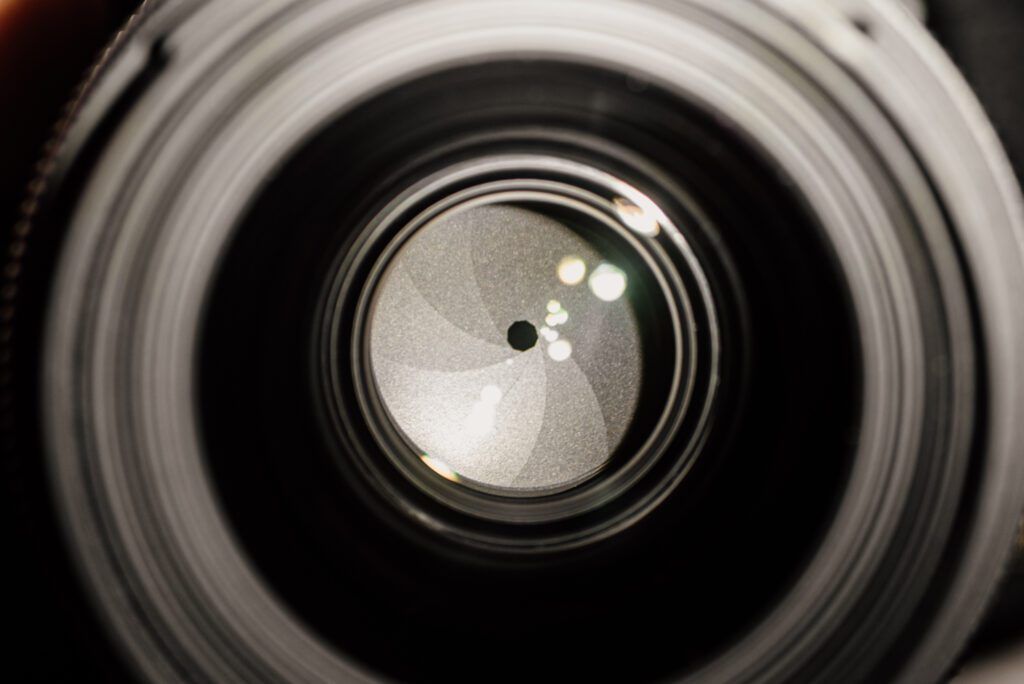
A photo demonstrating where the diaphragm is located inside of a camera lens. You can see the blades of the diaphragm are closed tightly in this photo, creating a small opening to let light in. This aperture is set at f/16. These blades will open or close, depending on how we change our aperture settings. Photograph by Angela Fulks
There are two ways we can change the aperture settings on our camera. One way is to use our camera’s manual mode. This allows us to change the aperture settings separately from the shutter speed and ISO settings. The other way is by using our camera’s aperture priority mode. This allows us to change the aperture settings while the camera decides how to adjust the shutter speed and ISO settings. These settings may be labeled differently, depending on which brand of camera you have, so it’s a good idea to refer to your camera manual for your specific camera brand.
How Does Aperture Affect Our Photos?
We just learned that aperture is the opening that determines the amount of light coming in through the lens and into our camera, but how does this affect our final image?
A wide aperture, meaning that the opening is bigger, will let more light in resulting in a brighter photograph.
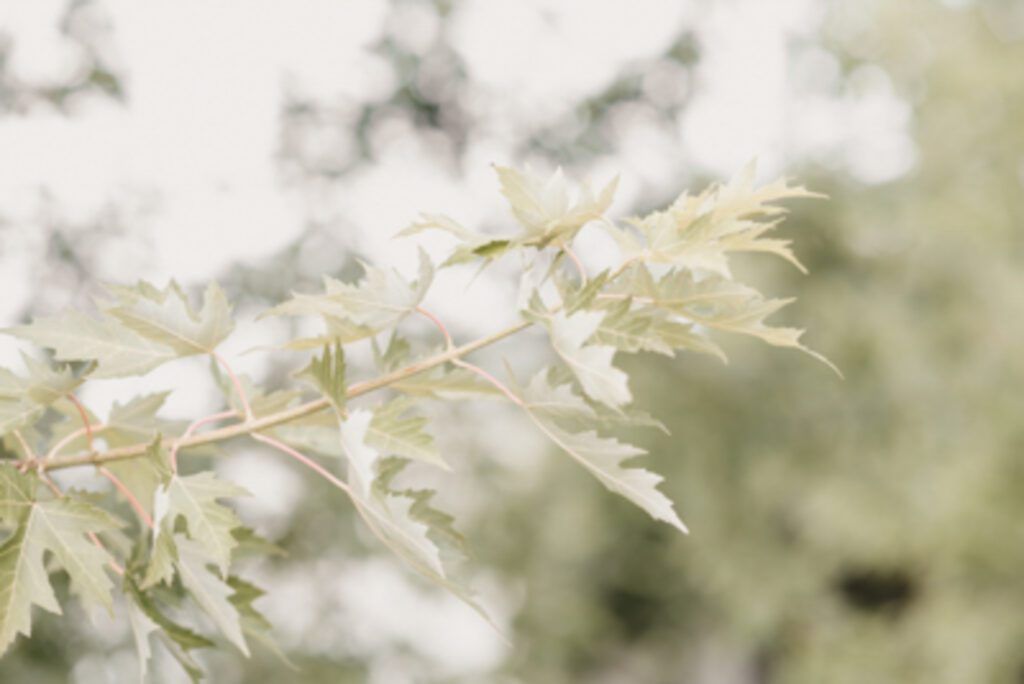
This photo was taken with a wide-open aperture, which let in too much light for my photo to be properly exposed. The colors of the leaves are all washed out. Photograph by Angela Fulks
A small aperture, meaning that the opening is smaller, lets in less light resulting in a darker photograph.
Not only does aperture help determine the exposure of our photograph, but it also determines the depth of field and how much of our photograph is in focus. We will discuss the focus and depth of the field in more detail in a bit.
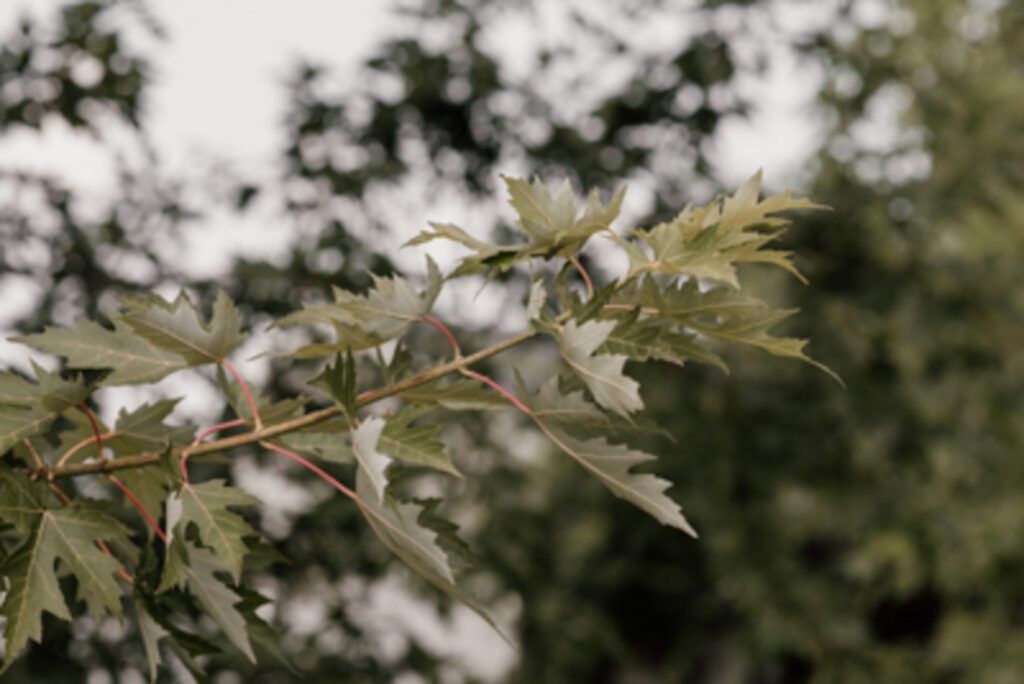
The same photo taken with a smaller aperture cuts down the amount of light coming into my camera. This gave my photo more true and correct exposure. Photograph by Angela Fulks
How Is Aperture Measured?
Aperture size is measured using f-stops. On our digital camera screens, you will see the letter f followed by a number. The number tells us how wide our aperture is.
What happens when we change the f-stop number with our camera in manual or aperture priority mode? As we change the f-stop number higher or lower, our aperture size will change accordingly.
Photographers use the aperture scale, also known as the f-stop scale, to measure these changes.
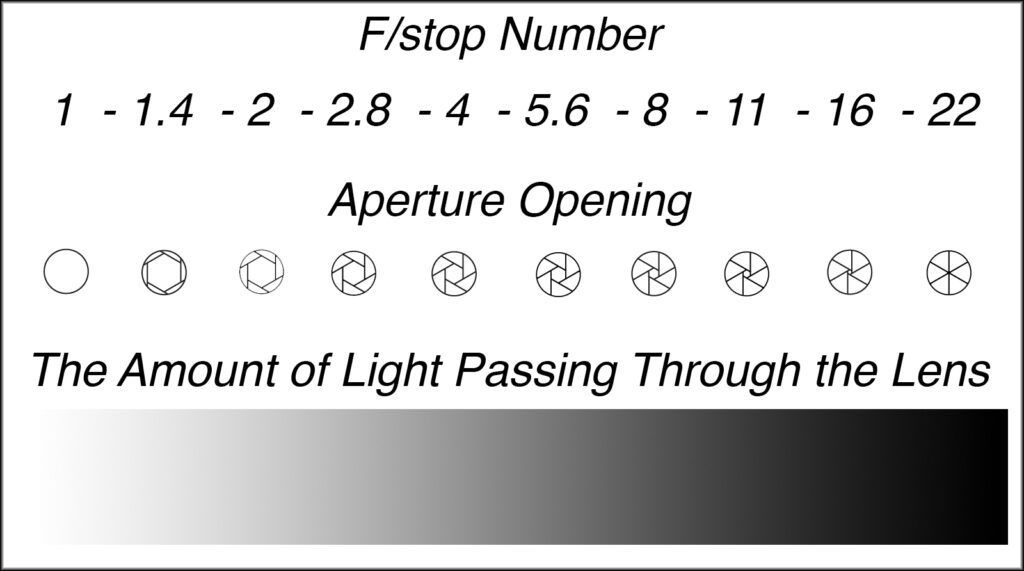
Graphic by Kent DuFault
There is one important thing to know about this scale and how the aperture and f-stops relate to each other. The smaller the f-stop number, the wider the aperture, as illustrated by the scale. You will see that the bigger the f-stop number becomes, the narrower our aperture becomes.
Not only does aperture help determine the exposure of our photograph, but it also determines the depth of field and how much of our photograph is in focus.
The relationship between aperture and f-stops can be hard to understand at first for a few reasons. Not only are the terms ‘aperture’ and ‘f-stop’ often used interchangeably, but their relationship may seem counterintuitive. With practice, by experimenting with your camera, and referring back to the scale as often as needed, you will soon see how big of an impact aperture and f-stops have on your photos.
How Does Aperture Size Affect Depth of Field and How Do We Control It?
Depth of field simply means how much of your photo is in focus. Large apertures, like f/1.8, have a shallow, or thin, depth of field while smaller apertures, like f/16, have a wide, or deep, depth of field.
A shallow depth of field means that only a small part of your photo is in focus. The areas in front of and behind your subject will be blurry.
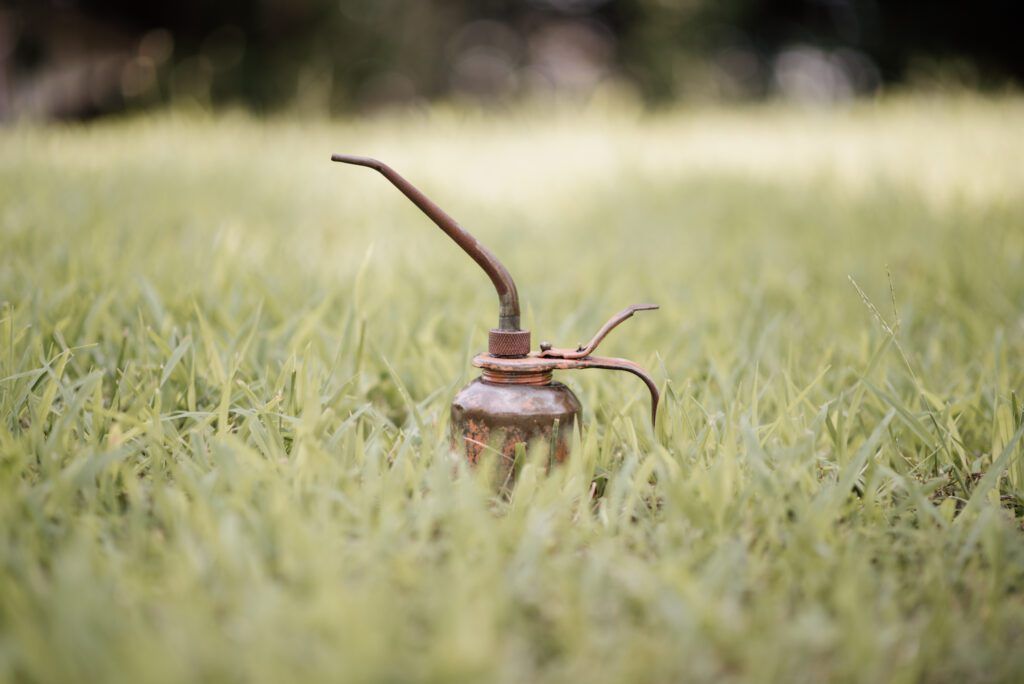
This photo illustrates what a shallow depth of field looks like. My subject, the oil can, is in focus while everything in front of it and behind it is blurry and out of focus. Photographers use a shallow depth of field to make their subject stand out from its surroundings. You can see that there is grass on either side of the oil that can still be in focus. This is because the grass lies in the area of the thin plane that falls within the area of focus. This photo was taken with my f-stop set at f/1.8. Photograph by Angela Fulks
A mid-range depth of field means that some areas of the photo are in focus, while others are not. As the photographer, you decide what to keep in focus!
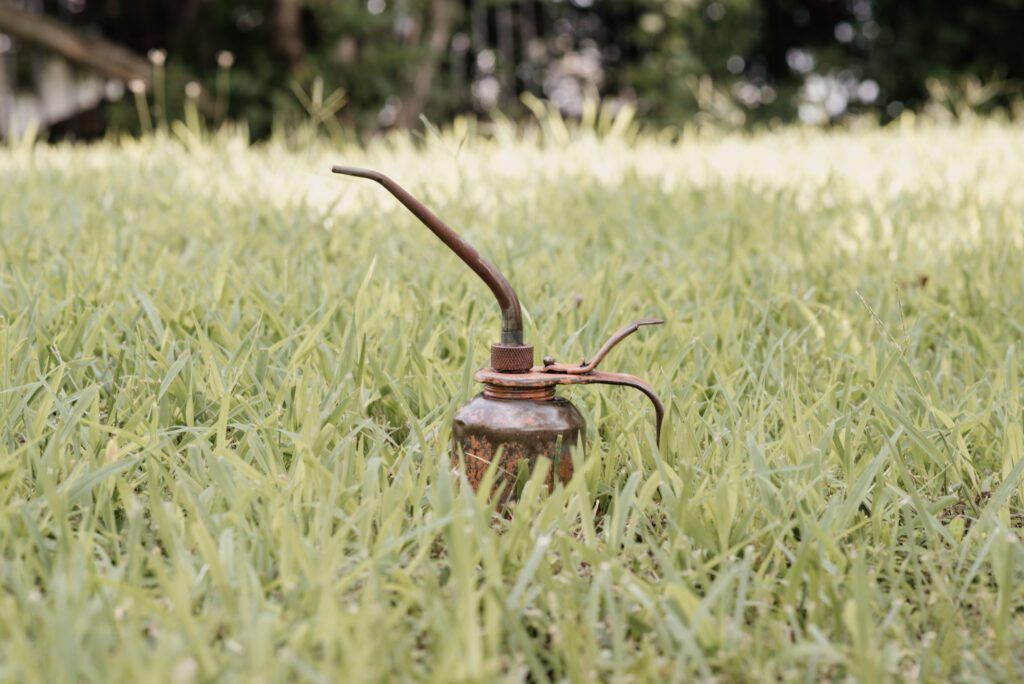
This photo illustrates a mid-range depth of field. The fence and trees in the background are more in focus and starting to distract from my subject. This photo was taken with my f-stop set at f/8. Photograph by Angela Fulks
A deep depth of field means that most or all the photos are in focus.
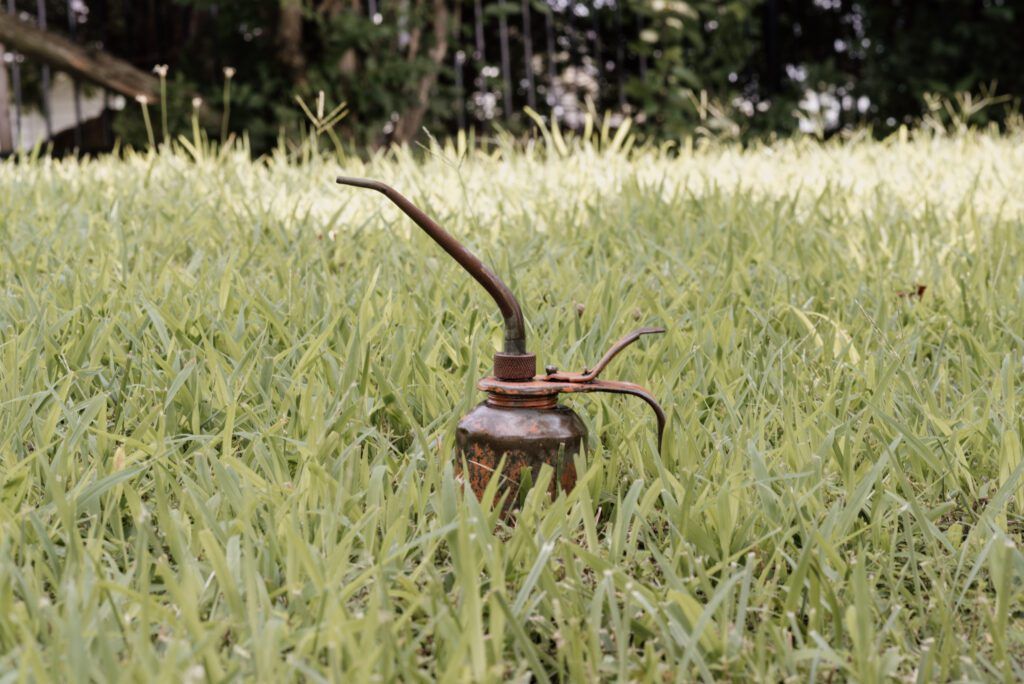
This photo illustrates a deep depth of field. The grass and the oil can are mostly all in focus with only the background being slightly out of focus. The fence posts and trees are easily distinguishable, creating a much busier and distracting background. This photo was taken with my f-stop set at f/16. Photograph by Angela Fulks
We can increase our depth of field to keep our whole photo in focus by narrowing, or closing down, the aperture. Remember that we can only make our aperture smaller by increasing the f-stop number. A good example of when to increase our depth of field might be a landscape photo or a photo of architecture. Any time we want to keep the whole photo in focus is the perfect time to increase our depth of field.
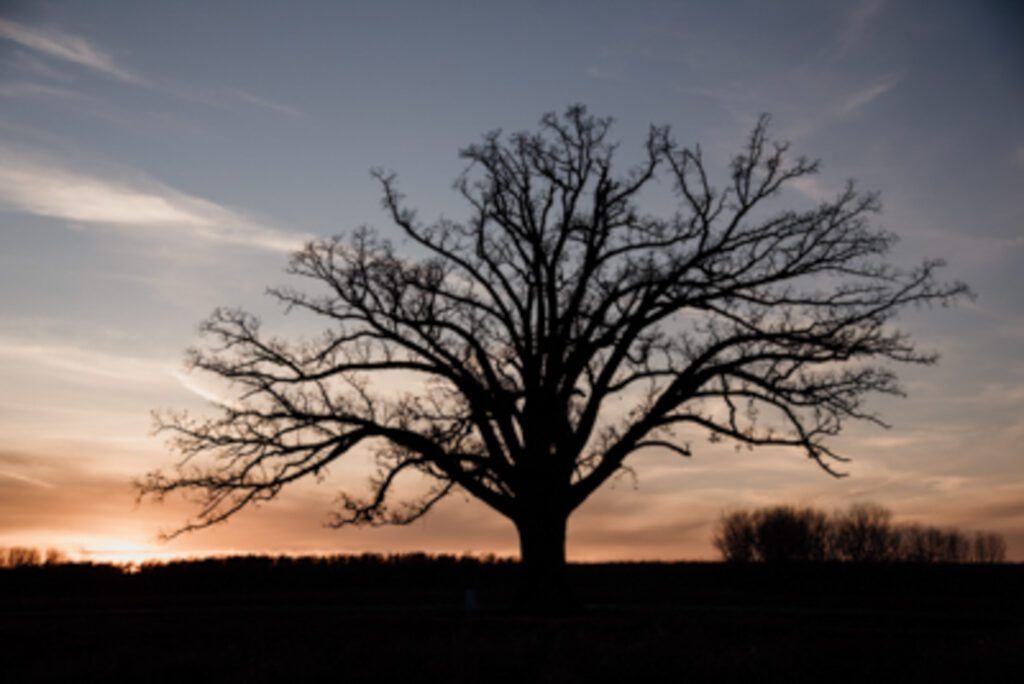
This amazing old oak tree is the clear subject of this photograph, but I felt it was important for me to keep as much of the surrounding landscape in focus as possible without sacrificing the remaining light of the sky behind it. I’m not embarrassed to say that it took about 15 tries, adjusting and re-adjusting my aperture to get this shot just right. Photograph by Angela Fulks
We can decrease our depth of field to keep more areas blurred out by widening, or opening up, the aperture. Remember that to widen our aperture, we have to decrease the f-stop number.

Portrait shot at a wider aperture to keep the storm clouds blurry enough to create a beautiful background but not distract from my photo’s subject. Photography by Angela Fulks
A good example of when we may want to decrease our depth of field might be for a portrait or a photo of a beautiful flower. These are good times to make that subject pop and stand out from the foreground and background of the photo.
A deep depth of field means that most or all the photos are in focus.
Learning how to creatively and effectively control our aperture can help us make an artistic and dramatic statement with our photography. It can be fun to photograph different scenarios using different aperture settings and f-stops! You may even find that you have a favorite range to stay within and that works better for your style of photography.
Do you feel like you have a better understanding of how aperture works? Find out below and test what you’ve learned.
Recommended Reading: If you’d like to master camera settings to create gorgeous, creamy, blurry backgrounds, grab a copy of Photzy’s premium guide: Beautiful Background Blur.
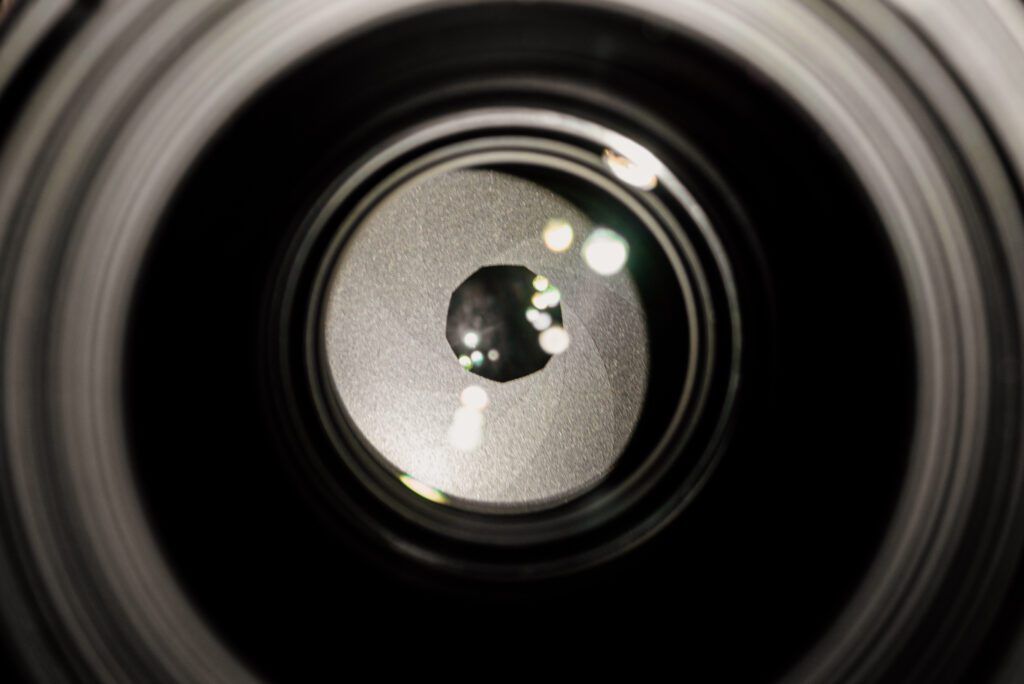
Photograph by Angela Fulks
- What does the term ‘aperture’ actually mean?
- True or false: The diaphragm is located inside of the camera body.
- What are the two modes on our camera that we can use to control the aperture?
- True or false: The aperture does not affect at all the brightness of our photos.
- How is aperture measured?
- True or false: A smaller f-stop number means that your aperture will also be smaller.
- How does aperture control depth of field?
- True or false: A shallow depth of field means that everything in your photo will be in focus.

